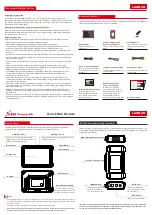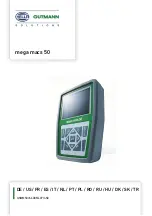
15
Quality for Professionals
Professionals
7 Settings
7.1 Spread width
The spread width depends on the density and shape of the seed and the spreader
disc speed. The seed spreader is designed to spread seed evenly over an area of 24
m. For this to be successful, the battery and generator must be in good condition.
Please refer to the setting charts under item 12 for the precise settings for sowing
rate, working width, etc. We recommend attaching the spreader at least 1 m above
the ground to enable an optimal spreading density.
Note: If the ES 100 M2 Special is attached to a machine with a small working width
and the seed is to be scattered directly into/in front of the roller, the spreader can be
angled slightly downward when attached. However, please note that the tank only
empties completely if it is level!
7.2 Regulating the application rate
To regulate the seed rate, turn the metering handle
that is attached on the left side. This moves the
pointer on the metering slide valve, which is used to
set the required position on the scale. The metering
slide valve is then fastened in position with the lock
nut attached to the thread.
Position 0: Closed; Position 10: Completely open.
Refer to the respective setting chart for the settings
you require. The transport box or a bag placed over
the front of the spreader can be used to perform the seed rate calibration test. If the
box is used, one of the sides is cut out and inserted in the spreader. Then, using the
control module, set the approximate spreader disc speed with which you intend to
spread seed on the field and select the required value for the metering shutter on the
scale. Selecting the right speed is important because the calibration quantity also
depends on the speed!
Using the “Open shutter” button on the control module, the seed rate calibration test
is now executed by opening the shutter for precisely one minute while catching the
spreading material so that none is wasted.
Fig.: 8
















































